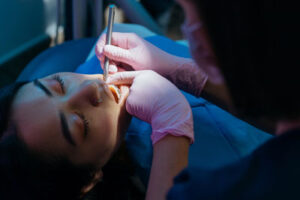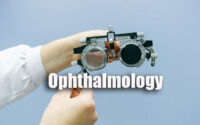MCQs in Dental Materials Questions and Answers for BDS and MDS Students
Looking for MCQs in Dental Materials Model Paper Pdf then you are on the right page. Here candidates can find the study material & model paper on dentistry for the Recruitment and MDS Entrance Exam.

Hence, click on the respective link in the table below and start downloading the MCQs in Dental Materials Question Paper Pdf for free. We have given the free MCQs in Dental Materials model question paper with answers to help the candidates.
Hence, go through the article and find the respective MCQs in Dental Materials Paper and start your preparation. Aspirants who are going to appear for dentistry online written examination are advised to check the syllabus and exam pattern before starting preparation.
The aspirants who are going to attend the Written Exam can start downloading the Model Question Papers of MCQs in Dental Materials. The direct links enclosed below to get the PDFs of MCQs in Dental Materials Previous Papers along with the Solutions.
Interested candidates can refer to the below links for downloading the MCQs in Dental Materials Sample Papers.
MCQs in Prosthodontics and Dental Materials pdf
1. Most numerous fibres in dental pulp are-
A) A-delta
B) A-beta
C) C fibres
D) Gamma fibres
2. Diameter of D16 of file 35-
A) 0.67mm
B) 0.35mm
C) 0.067mm
D) 0.35mm
3. Change in colour of traumatized tooth is evident in-
A) 1-2 weeks after injury
B) 2-3 weeks after injury
C) 3-4 weeks after injury
D) within few days
4. The first fluoride-containing dentifrice(CREST) had-
A) Stannous fluoride
B) Sodium fluoride l
C) Acidulated phosphate fluoride
D) Sodium monofluorophosphate
5. Which is the commonest type of injury in the orofacial region-
A) Laceration
B) Abrasion
C) Concussion
D) Avulsion
6. A patient aged 10 years, has lost a maxillary permanent Central Incisor, correct treatment is to-
A) Construct a suitable space maintainer immediately
B) Delay treatment until a fixed bridge can be constructed
C) Allow complete healing before considering a replacement
D) Observe
7. Masochistic habits are associated with-
A) Gullian barre syndrome
B) Lesch-Nyhan syndrome
C) Stevens Johnson syndrome
D) Patterson Kelly syndrome
8. Where are the dentist’s feet during any procedure when four-handed dentistry is being practiced-
A) on the stool support rim
B) on the floor
C) on the dental chair base
D) wherever is convenient
9. Evidence of development of human tooth can be observed as early as-
A) 6th week of embryonic life
B) 11th week of embryonic life
C) 14th week of embryonic life
D) 16th week of embryonic life
10. Epstein’s pearls are seen in-
A) Attached gingival
B) Floor of mouth
C) Midpalatineraphe
D) Alveolar ridge
11. Oedipus and Electra complexes are seen in which stages of psychosexual theory-
A) Oral
B) Anal
C) Phallic
D) Latency
12. To diagnose TMJ pain, which nerve block is given?
A) Auriculotemporal nerve block
B) Mandibular Nerve block
C) IANB
D) Maxillary Nerve block
13. Most common cause of shock in polytrauma case-
A) Hypovolemic shock
B) Circulatory shock
C) Distributive shock
D) Neurogenic shock
14. Predominant immunoglobulin in GCF-
A) IgA
B) IgG
C) IgM
D) IgE
15. Langer technique is-
A) Sub-epithelial connective tissue graft
B) free gingival graft
C) Fenestration and dehiscence
D) Incision given on lingual surface of mandible from Mesio-facial line angle of 1st molar to distal surface of 3rd molar
16. Earliest clinical sign of gingivitis is-
A) Bleeding on probing
B) Change in colour
C) Change in contour
D) Change in size
17. Maximum number of fibers in PDL are-
A) Oblique fibers
B) Transseptal fibers
C) Alveolar crest fibers
D) Horizontal fibers
18. Burtonian line is seen in poisoning of-
A) Lead
B) Heavy metal
C) Mercury
D) Arsenic
19. Slit collimator is used in-
A) Orthopantogram
B) Water’s view
C) Occlusal view
D) Lateral cephalogram
20. Best imaging tech to view TMJ derangement is-
A) MRI
B) CT
C) Pantomography
D) PET scan
| Dental Surgeon Questions and Answers | Dental Quiz |
| Dental MCQ | Dental Questions for Interview |
| MCQs in Dental Materials | Dentistry Questions and Answers |
21. Fogging of X—ray film occurs due to-
A) Improper processing
B) Short film-source distance
C) Placement of reverse film packet
D) Excessive bending
22. All of the following statements about denture stomatitis are true except-
A) Usually associated with a sore mouth
B) Usually associated with wearing a denture at night
C) More common in diabetics
D) More common in men
23. Fleeting pain sores are caused by-
A) Overextended denture borders
B) Occluding face height being too great
C) Malocclusion
D) None of these
24. Punched-out lesions on alveolar ridge is due to
A) Acrylic nodules on tissue surface of denture
B) Disturbed occlusion
C) Overextended borders of denture
D) Narrow occlusal table
25. The highest mercury concentration in amalgam filling is found-
A) At the margin of restoration
B) In the center of restoration
C) In deepest part of restoration
D) None of these
26. The addition of which of these can accelerate the setting time of zinc oxide cement-
A) Zinc acetate
B) Barium sulphate
C) Zinc sulphate
D) Barium chloride
27. Green strength with reference to plaster means-
A) Dry strength
B) Compressive strength
C) Strength due to green colour of stone
D) Wet strength
28. Beta-hemihydrate particles absorb-
A) More water
B) Less water
C) No water
D) None of the above
29. Hysteresis in a hydrocolloid gel is-
A) Moisture absorption
B) Temperature lag between gelation and liquefaction
C) Phenomenon of conversion of gel into sol
D) All of the above.
30. In the post-eruptive phase, a tooth undergoes primarily:
A) Rotational movement
B) Movements in distal direction
C) Movements in apical direction
D) Movements in axial and mesial direction
31. Incrementa| lines are a result of variation in;
A) Proliferation
B) Morphodifferentiation
C) Histodifferentiation
D) Rhythmic apposition
32. In a developing tooth, if the Hertwig’s sheath and the epithelial diaphragm fail to form, the resulting tooth would exhibit-
A) No radicular dentine
B) Malformed or fused roots
C) Acellular, but no cellular cementum
D) Defective enamel in cervical region
33. Gagging reflex is caused by
A) Trigeminal nerve
B) Glossopharyngeal Nerve
C) Facial nerve
D) Recurrent laryngeal
34. The sterilization of Gutta Percha is achieved by
A) Heat
B) Chemical sterilization
C) Flame
D) Autoclave
35. A seven year old boy fell of his bicycle 2 days ago and broke his Permanent Maxillary central incisor. The pulp horn is visible as a pin point. The tooth is vital. Your treatment will be
A) Pulpectomy
B) Place calcium hydroxide and fill with composite resin
C) Calcium hydroxide pulpotomy
D) Root canal treatment
36. Which is the only dental tissue that lose its formative cells as it matures
A) Enamel
B) Dentine
C) Pulp
D) Cementum
37. Density of film is decreased by increasing the
A) MA
B) Exposure time
C) Developing time
D) Rinsing time
38. The best space maintainer is
A) Lingual holding arch
B) Pulpectomised primary tooth
C) Band and loop maintainer
D) Removable partial denture
39. All of the following are keratinised EXCEPT of
A) Crevicular epithelium
B) Palatal epithelium
C) Alveolar mucosa
D) Free gingiva
40. The MOST cause of gingival irritation is
A) Calculus
B) Plaque
C) Caries
D) Restorative material
41. Which of the following factors can affect the shape and size of the pulp canal
A) Chemical irritation and caries
B) Trauma and function
C) Attrition, wear and aging of the patient
D) All of the above
42. Following a periodontal surgery; periodontal dressing will
A) Help in tissue adoption
B) Decrease the patient’s discomfort
C) Enhance the rate of healing
D) Control bleeding and maintain blood clot
43. Where does the bone resorption show in a necrosis pulp of deciduous molar
A) at the root apex
B) At the bifurcation
C) On the buccal side of the tooth
D) On the lingual side of the tooth
44. To extract upper deciduous molar, the movement should be
A) Buccal first to move tooth
B) Palatal first to move tooth
C) Distal first to move tooth
D) Rotation movement
45. Which of the following is MOST useful in differentiating between apical abscess and periodontal abscess
A) Percussion
B) Vitality tests
C) Cold tests
D) Heat tests
46. What is the ideal length for a post in post-core in anendodontically treated tooth
A) 2/3 of the tooth length
B) 1/2 of the tooth length
C) 1.5 times that of the crown
D) Same as the anticipated crown
47. At birth, the oral cavity usually contains
A) S. mutans only
B) No micro organism
C) S. mutans and S. salivaris
D) Lactobacilli and S. mutans
48. At birth, some calcified dental tissues are presented
A) All deciduous teeth and all permanent incisors
B) All deciduous teeth and permanent central incisors
C) All deciduous teeth and the first permanent molars
D) Deciduous teeth only
49. Which muscle acts on the disto lingual contour of lower denture
A) Mentalis
B) Masseter
C) Mylohyoid
D) Buccinator
50. Loss of sensation in the lower lip may be produced by
A) Bell’s palsy
B) Traumatic bone cyst
C) Trigeminal neuralgia
D) Fracture in the mandible first molar region


